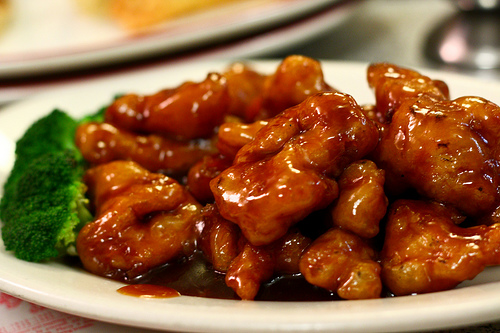One of the best things about Chinese restaurant food is the meat—the pieces are bite-sized, the flavours are addictive, and it’s always tender and easy to chew. But if you have ever tried to replicate any of your favourite Chinese dishes in your kitchen, you would have noticed that the high heat required for most recipes thoroughly dries out the meat that you’re trying to cook.
The technique that most Chinese restaurants use to create that juicy, delectable texture we all know and love is called velveting, and it’s not so much a secret as it is a little-known cooking method amongst home cooks. Today, Licious is going to tell you all that you need to know, about velveting.
(W)hat (T)he (F)ood is Velveting?
When meat, such as chicken, is velveted, it is first thinly-cut, skinned and marinated in a base mixture of salt, liquid and cornstarch for at least 30 minutes. After marinating, the chicken is tossed into a wok and flash-fried with oil over high heat. After the chicken is cooked for a minute or two, it is removed from the wok and left to cool while the rest of the ingredients (such as the vegetables and/or sauce) are cooked. The chicken is then added to the wok at the end for a short sauté with the prepared sauce before being served.
The most important part of this process and the key to velveting is the marinade: the chicken needs at least half an hour to ensure that its surface is coated with the cornstarch slurry thoroughly. This layer of cornstarch forms a barrier against the heat that the pan introduces—but also prevents the moisture from inside of the meat from escaping. The blanching, or flash-frying, is another step that enforces the barrier; the outside of the meat cooks so quickly that it seals the juiciness of the chicken.
Lastly, adding the chicken a few minutes before the dish is complete allows the meat to heat up to the same temperature as the rest of the meal without prolonged exposure to more heat (which will create a loss of moisture and a tougher texture).
We have used chicken as the primary example because that’s the most commonly consumed meat, and the velveting technique works wonders with chicken breasts. However, velveting works with any kind of meat, so long as the meat is cut into thin strips or small pieces.
(W)hen (T)he (F)ood should you use velveting?
Velveted meat tastes best with preparations that are heavy on sauce and flavour. Velveting is an easy yet essential technique for Asian stir-fry. Knowing how to velvet meat can help you enjoy the smooth flavours of Asian style meat, within the confines of your home, without ordering for takeout. So, go on and order the best cuts of meat, suitable for Asian style cooking, from Licious. Let us know about how that turned out, in the comments below.


We Ordered Fish Fillet. Awesome quality . Finally some company came to market which provides quality product.
Thanks Licious,
SharePyar eCommerce LLP
Sharepyar.com
We’re glad you liked your experience.